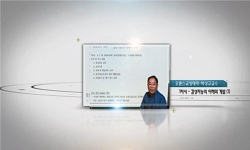This study examined the relationship of cognitive and emotional empathy with social behaviors, in a sample of 53 10–12–year-old Korean children. Cognitive empathy was measured by a battery of theory of mind tasks. Emotional empathy was measured by...
http://chineseinput.net/에서 pinyin(병음)방식으로 중국어를 변환할 수 있습니다.
변환된 중국어를 복사하여 사용하시면 됩니다.
- 中文 을 입력하시려면 zhongwen을 입력하시고 space를누르시면됩니다.
- 北京 을 입력하시려면 beijing을 입력하시고 space를 누르시면 됩니다.

아동의 인지적·정서적 공감 능력과 사회적 행동 간의 관계 = The Relation of Cognitive and Emotional Empathy to Social Behaviors in Korean Children
한글로보기https://www.riss.kr/link?id=A104109098
- 저자
- 발행기관
- 학술지명
- 권호사항
-
발행연도
2013
-
작성언어
Korean
-
주제어
인지공감 ; 정서공감 ; 마음읽기 ; 안면모방 ; 근전도 ; 추미근 ; 대협골근 ; 친사회성 ; 공격성 ; cognitive empathy ; emotional empathy ; mindreading ; facial mimicry ; electromyography(EMG) ; corrugator supercilii ; zygomaticus major ; prosocial behavior ; aggression
-
등재정보
KCI등재
-
자료형태
학술저널
- 발행기관 URL
-
수록면
255-275(21쪽)
-
KCI 피인용횟수
29
- 제공처
-
0
상세조회 -
0
다운로드
부가정보
다국어 초록 (Multilingual Abstract)
This study examined the relationship of cognitive and emotional empathy with social behaviors, in a sample of 53 10–12–year-old Korean children. Cognitive empathy was measured by a battery of theory of mind tasks. Emotional empathy was measured by facial mimicry response, based on the assumption that emotional contagion by facial mimicry is a key factor in emotional empathy. Facial mimicry scores were calculated using the facial EMG activity in the zygomaticus major and corrugator supercilii muscle during exposure to dynamic happy and sad expressions. In addition, children’s empathy and social behaviors were assessed by self-report questionnaires, such as the IRI, BEI, and EQ-C. The mind-reading scores were not correlated with the cognitive empathy subscale scores. In contrast, the facial mimicry scores, which were the differences in mean muscle activity at the zygomaticus major between exposure to happy and sad expressions, were positively correlated with the emotional empathy subscale scores. Facial mimicry scores and mind-reading scores predicted different aspects of pro-social behaviors. The present results demonstrated the dissociation between cognitive and emotional empathy.
국문 초록 (Abstract)
인지공감과 정서공감이 각각 친사회적 행동 및 공격행동과 어떤 형태로 관련되는지를 초등학교 4∼6학년 아동을 대상으로 연구하였다. 인지공감은 상대방의 생각이나 관점, 정서를 이해하...
인지공감과 정서공감이 각각 친사회적 행동 및 공격행동과 어떤 형태로 관련되는지를 초등학교 4∼6학년 아동을 대상으로 연구하였다. 인지공감은 상대방의 생각이나 관점, 정서를 이해하는 능력이므로 상대방의 행동과 말에서 생각을 추론하는 생각읽기 과제와 표정에서 정서를 읽는 정서읽기 과제로 측정하였다. 정서공감의 초기단계는 상대방의 표정을 자동적으로 모방함으로써 동일한 정서를 경험하게 되는 정서전염이므로, 얼굴표정에 대한 안면모방 반응으로 정서공감을 측정하였다. 기쁜 표정과 슬픈 표정을 짓는 동영상을 볼 때의 추미근과 대협골근의 근전도(EMG)를 측정하여, 근전도 패턴이 제시된 표정과 일치하는 정도를 안면모방 점수로 사용하였다. IRI, EQ-C 및 Bryant 척도로 공감능력을, 친사회적 행동 척도와 공격성 척도로 사회적 행동을 평가하였다. 생각읽기와 정서읽기는 공감척도의 인지공감 요인과 유의한 상관이 없었으나, 웃을 때 수축하는 대협골근 반응이 슬픈 표정보다 기쁜 표정 자극에서 더 큰 정도(대협골근 모방)는 공감척도의 정서공감 요인과 정적 상관이 있었다. 안면모방과 생각읽기가 공격성을 예언하지는 못하였으나 친사회성의 서로 다른 측면을 예언하였다. 이는 인지공감과 정서공감이 사회적 행동에 서로 다르게 관련됨을 보여준다.
참고문헌 (Reference)
1 김혜리, "학령기와 그 이후의 마음이해 발달: 애매한 상황에서의 마음읽기 능력" 한국심리학회 산하 한국발달심리학회 20 (20): 21-49, 2007
2 이은아, "초등학생용 공격성 척도 개발 및 타당화" 경성대학교 대학원 2011
3 박성원, "정신분열병 환자의 부정 정서 자극에 대한 생리적 반응" 한국인지및생물심리학회 21 (21): 215-232, 2009
4 박성원, "정서유발에 따른 정신분열병 환자의 자율신경계 및 안면근육반응" 정신간호학회 17 (17): 227-235, 2008
5 조경자, "정서 상태와 얼굴표정간의 연결 능력의 발달" 한국감성과학회 10 (10): 127-138, 2007
6 차화정, "자기보고형 한국어판 아동용 공감지수(EQ-C) 척도의 타당화 예비연구" 한국심리학회 산하 한국발달심리학회 24 (24): 63-81, 2011
7 김경미, "유치원 아동의 마음이론과 사회적 능력의 관계" 한국심리학회 산하 한국발달심리학회 21 (21): 21-39, 2008
8 김혜리, "얼굴표정 자극에 대한 아동의 안면모방과 정서공감간의 관계" 한국인지및생물심리학회 24 (24): 433-452, 2012
9 정희원, "아동의 친사회적 행동척도개발 및 타당화 예비 연구-11, 12세 아동을 중심으로" 한국아동학회 26 (26): 15-27, 2005
10 김아름, "또래지위에 따른 마음읽기 능력의 차" 한국심리학회산하학교심리학회 6 (6): 149-169, 2009
1 김혜리, "학령기와 그 이후의 마음이해 발달: 애매한 상황에서의 마음읽기 능력" 한국심리학회 산하 한국발달심리학회 20 (20): 21-49, 2007
2 이은아, "초등학생용 공격성 척도 개발 및 타당화" 경성대학교 대학원 2011
3 박성원, "정신분열병 환자의 부정 정서 자극에 대한 생리적 반응" 한국인지및생물심리학회 21 (21): 215-232, 2009
4 박성원, "정서유발에 따른 정신분열병 환자의 자율신경계 및 안면근육반응" 정신간호학회 17 (17): 227-235, 2008
5 조경자, "정서 상태와 얼굴표정간의 연결 능력의 발달" 한국감성과학회 10 (10): 127-138, 2007
6 차화정, "자기보고형 한국어판 아동용 공감지수(EQ-C) 척도의 타당화 예비연구" 한국심리학회 산하 한국발달심리학회 24 (24): 63-81, 2011
7 김경미, "유치원 아동의 마음이론과 사회적 능력의 관계" 한국심리학회 산하 한국발달심리학회 21 (21): 21-39, 2008
8 김혜리, "얼굴표정 자극에 대한 아동의 안면모방과 정서공감간의 관계" 한국인지및생물심리학회 24 (24): 433-452, 2012
9 정희원, "아동의 친사회적 행동척도개발 및 타당화 예비 연구-11, 12세 아동을 중심으로" 한국아동학회 26 (26): 15-27, 2005
10 김아름, "또래지위에 따른 마음읽기 능력의 차" 한국심리학회산하학교심리학회 6 (6): 149-169, 2009
11 Bosacki, S., "Theory of mind in preadolescence: Relations between social understanding and social competence" 8 : 237-255, 1999
12 Happé, F., "Theory of mind and social impairment in children with conduct disorder" 14 : 385-398, 1996
13 Slaughter, V., "Theory of mind and peer acceptance in preschool children" 20 (20): 545-564, 2002
14 Litvack-Miller, W., "The structure of empathy during middle childhood and its relationship to prosocial behavior" 123 (123): 303-324, 1997
15 Eisenberg, N., "The relation of empathy to prosocial and related behaviors" 101 : 91-119, 1987
16 Miller, P. A., "The relation of empathy to aggressive and externalizing/antisocial behaviour" 103 : 324-344, 1988
17 Batson, C. D., "The altruism question: Toward a social psychological answer" Earlbaum 1991
18 Baron-Cohen, S., "The Essential Difference: The Truth about the Male and Female Brain" Perseus Publishing 2003
19 Auyeung, B., "The Children's Empathy Quotient and Systemizing Quotient: Sex Differences in Typical Development and in Autism Spectrum Conditions" 39 (39): 1509-1521, 2009
20 Dodge, K. A., "Social cognition and children’s aggressive behavior" 5 : 162-170, 1980
21 Sutton, J., "Social cognition and bullying: social inadequacy or skilled manipulation?" 17 : 435-450, 1999
22 Feshbach, H. D., "Sex differences in empathy and social behavior in children, In The development of prosocial behavior" Cambridge University Press 1982
23 Baron-Cohen, S., "Recognition of faux pas by normally developing children and children with Asperger syndrome or high-functioning autism" 29 : 409-418, 1999
24 Dimberg, U., "Rapid facial reactions to different emotionally relevant stimuli" 39 : 39-45, 1998
25 Eisenberg, N., "Prosocial development in adolescence: A longitudinal study" 27 : 849-857, 1991
26 Davis, M. H., "Personality and empathic accuracy, In Empathic accuracy" Guilford Press 1997
27 Pfeifer, J. H., "Mirroring others' emotions relates to empathy and interpersonal competence in children" 39 : 2076-2085, 2008
28 Peterson, C. C., "Mindreading and moral awareness in popular and rejected preschoolers" 20 (20): 205-224, 2002
29 Davis, M. H., "Measuring individual differences in empathy: evidence for a multidimensional approach" 44 : 113-126, 1983
30 Baron-Cohen, S., "Is there a “language of the eyes?” Evidence from normal adults and adults with autism or asperger syndrome" 4 (4): 311-331, 1997
31 Borke, H., "Interpersonal perception of young children: egocentrism or empathy?" 5 : 262-269, 1971
32 Capage, L., "Individual differences in theory of mind, aggressive behavior, and social skills in young children" 12 : 613-628, 2001
33 Dimberg, U., "Facial reactions to emotional stimuli: Automatically controlled emotional responses" 16 : 449-471, 2002
34 de Wied, M., "Facial EMG responses to dynamic emotional facial expressions in boys with disruptive behavior disorders" 40 : 112-121, 2006
35 Ellis, P. L., "Empathy: a factor in antisocial behavior" 10 : 123-134, 1982
36 Eisenberg, N., "Empathy: Conceptualization, measurement, and relation to prosocial behavior" 14 : 131-149, 1990
37 Dolan, M., "Empathy, antisocial behavior and personality pathology, In Empathy in mental illness" Cambridge University Press 2007
38 Burke, D. M., "Empathy in secually offending and nonoffending in adolescent males" 16 : 222-233, 2001
39 Hoffman, M. L., "Empathy and moral development: Implications for caring and justice" Cambridge University Press 2000
40 Basch, M. F., "Empathic understanding: A review of the concept and some theoretical considerations" 31 : 101-126, 1983
41 Blair, R. J., "Empathic dysfunction in psychopathic individuals, In Empathy in mental illness" Cambridge University Press 2007
42 Sonnby-Borgstrőm, M., "Emotional empathy as related to mimicry reactions at different levels of information processing" 27 : 3-23, 2003
43 Hartfield, E., "Emotional contagion" Cambridge University Press 1994
44 Deschamps, P. K. H., "Electromyographic responses to emotional fecial expressions in 6-7 years olds: A feasibility study" 85 : 195-199, 2012
45 Hogan, R., "Development of an empathy scale" 33 : 307-316, 1969
46 Wellman, H. M., "Developing understanding of mind, In Understanding other minds: perspectives from developmental cognitive neuroscience" Oxford University Press 2000
47 Lipps, T., "Das Wissen von fremden Icheon, In Psychologische Untersuchungen (Band 1)" Engelmann 1907
48 Moffitt, T. E., "Childhood-onset versus adolescent-onset antisocial conduct problems in males: National history from ages 3 to 18 years" 8 : 399-424, 1996
49 Hughes, C., "Antisocial, angry, and unsympathetic: "Hard to manage" preschoolers' peer problems, and possible cognitive influences" 41 : 169-179, 2000
50 Bryant, B., "An index of empathy for children and adolescents" 53 : 413-425, 1982
51 Piferi, R. L., "An alternative approach for achieving cardiovascular baseline: viewing an aquatic video" 37 : 207-217, 2000
52 Eisenberg, N., "Altruistic emotion, cognition, and behavior" Erlbaum 1986
53 Mehrabian, A., "A measure of emotional empathy" 40 : 523-543, 1972
동일학술지(권/호) 다른 논문
-
유아의 실행 기능 발달: 연령 및 모의 취업에 따른 분석
- 한국심리학회 산하 한국발달심리학회
- 박혜원
- 2013
- KCI등재
-
한국 성인 및 만 4세 아동의 분배 상황 평가 시 비율적 사고 능력
- 한국심리학회 산하 한국발달심리학회
- 김효림
- 2013
- KCI등재
-
- 한국심리학회 산하 한국발달심리학회
- 고연정
- 2013
- KCI등재
-
양보 행동 동기가 감정에 미치는 영향에 대한 한국 성인과 학령 전기 아동의 이해
- 한국심리학회 산하 한국발달심리학회
- 윤지영
- 2013
- KCI등재
분석정보
인용정보 인용지수 설명보기
학술지 이력
| 연월일 | 이력구분 | 이력상세 | 등재구분 |
|---|---|---|---|
| 2027 | 평가예정 | 재인증평가 신청대상 (재인증) | |
| 2021-01-01 | 평가 | 등재학술지 유지 (재인증) |  |
| 2018-01-01 | 평가 | 등재학술지 유지 (등재유지) |  |
| 2015-01-01 | 평가 | 등재학술지 유지 (등재유지) |  |
| 2011-01-01 | 평가 | 등재학술지 유지 (등재유지) |  |
| 2009-01-01 | 평가 | 등재학술지 유지 (등재유지) |  |
| 2007-01-01 | 평가 | 등재 1차 FAIL (등재유지) |  |
| 2005-01-01 | 평가 | 등재학술지 유지 (등재유지) |  |
| 2002-01-01 | 평가 | 등재학술지 선정 (등재후보2차) |  |
| 1999-07-01 | 평가 | 등재후보학술지 선정 (신규평가) |  |
학술지 인용정보
| 기준연도 | WOS-KCI 통합IF(2년) | KCIF(2년) | KCIF(3년) |
|---|---|---|---|
| 2016 | 1.22 | 1.22 | 1.36 |
| KCIF(4년) | KCIF(5년) | 중심성지수(3년) | 즉시성지수 |
| 1.39 | 1.45 | 2.085 | 0.23 |




 KCI
KCI






